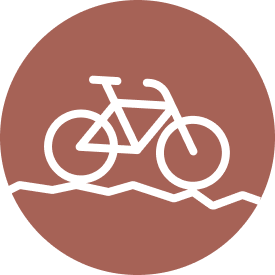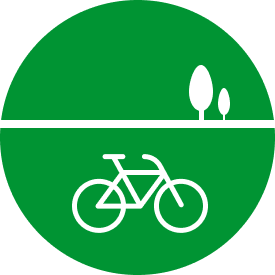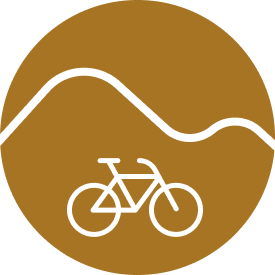You can find this route on the BikeSquare app with code M02
This pleasant and flat bike tour will take you to discover Staffarda Abbey by guiding you on a pleasant loop that winds along the slopes of Monbracco. The loop passes through the municipalities of Paesana, Barge, Martiniana Po and Sanfront, leading you to discover the historical and gastronomic wealth of this area.
What to see in Barge
The town of Barge has a very ancient history, as testified by the rock engravings found on the summit of Monte Bracco (often shortened to Monbracco). It is from the 1400s that Barge began a flourishing development mainly thanks to the quarrying industry of construction rocks from the slopes of Monbracco. Even Leonardo Da Vinci in one of his manuscripts mentions this mountain, describing it as a site for the production of a "stone as white as Carrara marble and as hard as porphyry", hence the nickname Montagna di Leonardo (Leonardo's Mountain). Barge can also boast many fine monuments and churches, such as the parish church of San Giovanni Battista, the ruins of the Lower Castle and the medieval streets of the old town centre.
What to see in Staffarda
Pedalling along secondary roads immersed in green fields, you reach the abbey of Santa Maria di Staffarda. Founded in the early 12th century by the Order of Cistercian monks on land donated by Marquis Manfredo I of Saluzzo. The abbey consists of several buildings including an impressive Romanesque/Gothic cloister, a guesthouse and a covered market. Since the Middle Ages, it has been an important centre for trade, also favoured by the products obtained from the reclamation of the surrounding farmland desired by the monks. In 1690, it suffered serious damage following the battle between the Savoy and French who were fighting over the territory of Saluzzo. It was then rebuilt in the first decades of the 18th century, altering its typical Gothic forms.
What to see in Sanfront
Leaning against the walls of Monbracco, under a rocky outcrop, stands Balma Boves, a charming hamlet where time seems to have stopped in the Middle Ages and which recalls the villages of the pueblos navajos. In fact, the last inhabitants of this village abandoned it in the 1950s when its location was unsuitable for modern life. Today, transformed into an eco-museum, it reminds us of when man, in these valleys, still lived in perfect harmony with nature, knowing how to exploit natural resources without abusing them.
Information
Starting from €45
per person
-
74 Km
-
5 hours
-
 Paved road
Paved road
 Dirt road
Dirt road
 Sports
Sports
 Flat land
Flat land
 Hills
Hills
 Mountains
Mountains
 Not indicated
Not indicated
 Guided
Guided
 Self Guided
Self Guided
 1 day
1 day
 Regular
Regular
 Flat
Flat
 Light Climbs
Light Climbs
 Bike
Bike
- Difficulty: 3















